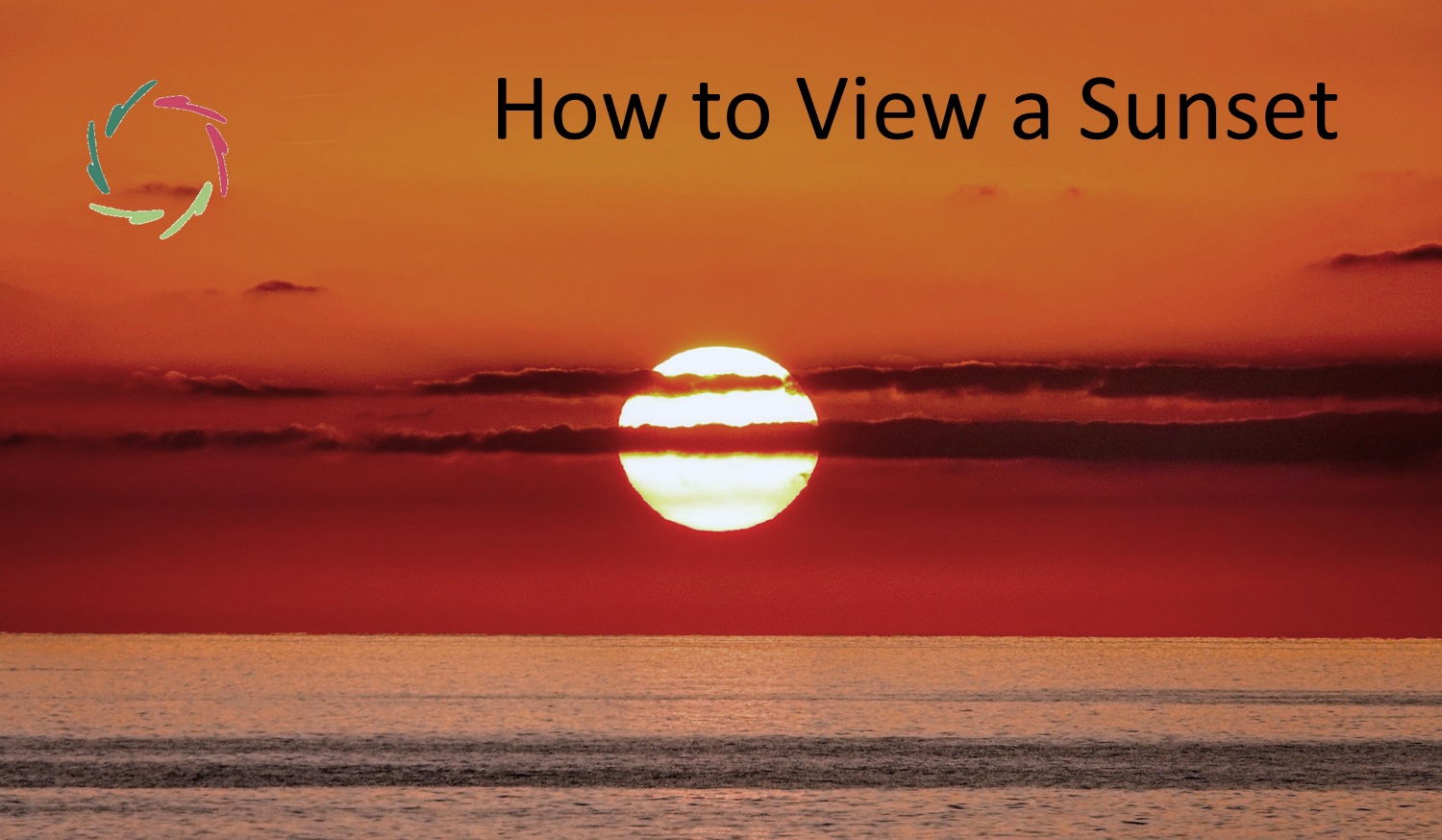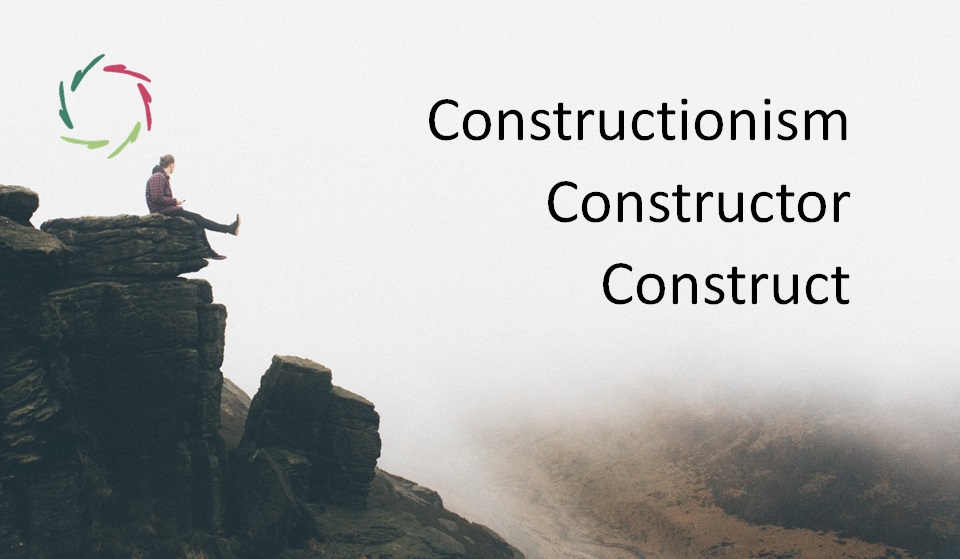How to View a Sunset

One of my fondest meditation memories is an ocean-view sunset gently flowing over into a starry nightscape. A friend and I sat in formal meditation for several hours, watching the sun sink below the horizon. Sublime!
Science now reveals that sunset is more than just a beautiful sight; it’s actually an ideal setting for meditation, aligning perfectly with our natural rhythms and providing a gateway to deeper states of awareness.
The science behind a sunset’s influence
Sunsets are powerful not only because of their aesthetic appeal but also because of their biological impact. Research has shown that the specific wavelengths of light present during a sunset – rich in blues and oranges – activate intrinsically photosensitive retinal ganglion cells (ipRGCs). These cells are crucial for regulating our circadian rhythm, which controls our sleep-wake cycles and overall mood. Exposure to these light cues during sunset helps our internal clock reset, making it an ideal time for meditation that promotes both relaxation and wakefulness. [1]
Further, the panoramic view of a sunset activates the parasympathetic nervous system, which is responsible for rest and digestion. By immersing yourself fully in this broad visual field, you can reduce stress levels, shift your brain state, and tap into a profound sense of calm. These effects make sunsets not just beautiful but scientifically validated moments for engaging in meditative practices. [2]
Also regenerative?
Interestingly, current research into retinal ganglion cell (RGC) regeneration suggests that regular exposure to natural light and specific visual stimuli can stimulate neural pathways, promoting not only eye health but possibly broader brain regeneration.
This opens possibilities for enhancing neuroplasticity and even influencing long-term cognitive health.
The AURELIS approach: viewing a sunset as a deep inner experience
The way you approach a sunset experience is crucial. AURELIS teaches that intent is everything. When you approach a sunset with a sense of openness, allowing the experience to unfold naturally without expecting anything in return, you are engaging with your subconscious in a way that invites depth and growth. This is more effective than viewing a sunset simply to “relax” or “gain a benefit,” which is a more superficial approach.
When you immerse yourself fully and give yourself to the sunset, you allow it to resonate with your inner self, creating an opportunity for transformation. By aligning your intent with nature’s rhythm, you harmonize with the sunset’s beauty and its calming influence on your nervous system. The subconscious, guided gently, opens up to deeper levels of relaxation and connection.
How to fully engage with a sunset: a practical guide
To experience the full benefits of a sunset, follow these steps:
- Prepare the setting: Find a quiet place with an unobstructed view of the horizon. Limit distractions—leave your phone behind and give yourself the gift of presence. Enter this experience without expectations, simply ready to observe and receive.
- Engage with focus techniques: Start by narrowing your focus on a single part of the sunset — perhaps the edge of the sun as it meets the horizon or the reflection on the water. Then, shift your gaze to a panoramic view, taking in the entire landscape. This shift between focused and expansive views aligns with the brain’s natural rhythms, promoting a balance between alertness and relaxation. [3]
- Immerse all your senses: Pay attention to how the temperature changes as the sun sets. Listen to the sounds around you — birds settling in for the night or the waves lapping on the shore. Engage all your senses fully. The more you immerse yourself in the experience, the more the parasympathetic system activates, deepening your relaxation.
- Use autosuggestions: If you are familiar with AURELIS autosuggestions, gently invite yourself to open up to the experience. You might silently suggest, “I am one with this sunset,” or “I allow myself to relax and receive.” These autosuggestions can enhance the sense of connection and openness, inviting your subconscious to align with the natural flow of the moment.
- Lisa’s guided sunset session: Listening to a guided session delivered by Lisa can deepen your experience. With her gentle guidance, you can follow a series of autosuggestions designed to immerse you fully in the sunset. Lisa encourages a state of allowing, where you become one with the sunset’s colors, temperature changes, and rhythms, supporting a profound sense of inner peace.
- Virtual Reality options: If you don’t have access to a natural sunset, virtual reality (VR) offers a valuable alternative. VR sunsets, combined with guided autosuggestions from Lisa, can activate similar neural circuits as an actual sunset, engaging the same processes that promote relaxation and circadian alignment. Research shows that these simulated experiences can still stimulate neuroplasticity and offer a comparable sense of calm and well-being.
The future of sunset research with Lisa
The potential for research with Lisa in the context of sunset experiences is promising. The intersection of neuroscience, autosuggestion, and visual stimuli opens new avenues for studying how structured experiences, like viewing a sunset, might influence not just circadian rhythms but also neuroplasticity and even retinal ganglion cell (RGC) regeneration. By combining sunset visualization with Lisa’s deep autosuggestions, we could explore the long-term effects on cognitive health and brain aging. This research could potentially validate and expand our understanding of how such experiences influence longevity and mental resilience.
The deeper meaning of viewing a sunset
A sunset is a universal symbol of transition — an ending that also marks the beginning of a new cycle. Embracing this transition with openness, through natural light or with Lisa’s guidance, allows you to connect with the more prominent rhythm of life. By entirely giving yourself to the sunset experience, you open the door to inner renewal and a profound sense of peace. It’s not merely an act of observation but an invitation to align with nature and your deeper self.
In each sunset lies the opportunity for transformation.
Will you take it?
References
[1] Huberman AD. “Neuroscience: A Chromatic Retinal Circuit Encodes Sunrise and Sunset for the Brain.” Curr Biol. 2020 Apr 6;30(7).
[2] Huberman AD, Feller MB, Chapman B. “Mechanisms underlying development of visual maps and receptive fields.” Annu Rev Neurosci. 2008;31:479-509.
[3] Balban MY, Huberman AD, et al. “Brief structured respiration practices enhance mood and reduce physiological arousal.” Cell Rep Med. 2023 Jan 17;4(1):100895.


